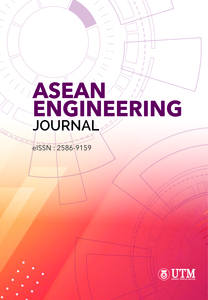INVESTIGATION AND TREATMENT OF AIR POLLUTION FROM INCENSE BURNING IN VIETNAM
DOI:
https://doi.org/10.11113/aej.v11.16869Keywords:
Incense, Indoor air pollution, Photocatalysis, PM10, PM2.5, VOCsAbstract
Indoor air pollution caused by combustion is a common problem in low-and middle-income countries which negatively affects human health. In Asian countries, burning incense in temples, pagodas, or residences is popular. This study consists of three contents (i) monitoring air quality parameters, including total volatile organic compounds (TVOCs), particulate matter (i.e. PM10 and PM2.5), and CO2 concentration in five pagodas in Ho Chi Minh City and Binh Duong province; (ii) determining air pollutants concentration generated by incense burning in room; and (iii) investigating incense smoke removal ability of photocatalytic devices. The results showed that the average air pollutants concentration in the pagodas was 625-1,108 ppb of TVOCs, 1,935-2,967 ppm of CO2, 1,175-2,137 μg/m3 of PM2.5, and 1,589-2,871 μg/m3 of PM10 in which TVOCs, PM2.5, and PM10 were presented at the threshold of direct impact on human health. Burning seven types of incense in a room revealed that the cinnamon incense smoke contained the highest concentration of TVOCs. Using photocatalytic devices for incense smoke treatment showed that the photocatalyst provided the best removal efficiency of VOCs (48.13%) was zinc salt-impregnated titanium dioxide with Zn/Ti molar ratio of 0.5% and calcined at 500 oC. This result was initially successful in finding a way to low down VOCs concentration generated from incensation to allowable level (490 ppb).
















